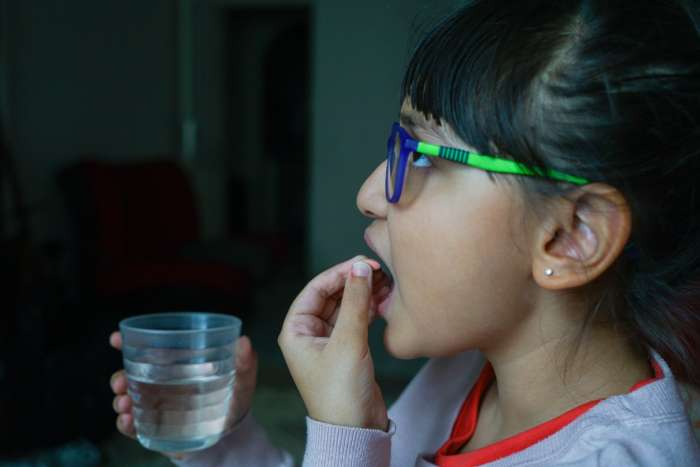As the parent of an autistic child with an Individual Education Plan (IEP), I’m in a few different online autism parenting groups. They’re quite resourceful and can even help you bond with parents around the globe who also raise kids with special needs.
One mom recently posed a great question: How do you get your autistic tween/teen to swallow pills? (And yes, of course, some teens and adults in general struggle with taking pills, this is common regardless of disability or not.)
I have an extremely hard time getting my daughter to take any medication. She can’t stand the texture or taste, even if it’s berry-flavored or mixed into apple juice. I worry about how she will take meds when she’s a teenager since so many medicines come in pill form and she’s scared of choking.
Seeking additional answers and help with pill-swallowing, I consulted with a medical expert, Dr. Fae Dopwell. Dr. Dopwell is a board-certified developmental-behavioral pediatrician at Pediatrix Developmental Medicine of Dallas. Together, we identify the reasons why special needs children may struggle with swallowing pills, as well as some methods to overcome this issue.
Why Autistic Children May Struggle with Pill Swallowing

Choking Anxiety
“It’s very common for children with or without disabilities to have difficulty swallowing pills,” confirms Dr. Dopwell. Not only do they fear choking, but “some autistic children may have difficulty swallowing certain textures because the texture elicits a gag reflex. This can be either mechanical or sensory.”
Lack of Chewing
Despite instructions from their parents, some children with special needs may find it challenging to understand the concept of swallowing without chewing first.
Autism Signs in Teen Girls: Why Autistic Girls Are Often Misunderstood
If you think your daughter has autism, know there’s tons of support out there for you and your child. (Take it from someone who has a daughter with an autism spectrum disorder diagnosis.) Read More
This is certainly how I felt as a teen—how was I supposed to swallow something hard and small, without chewing it first? After all, I would chew on my 1980s pink Flintstones vitamins, and those were also “pills.”
How to Help Your Autistic Kid Swallow Medicine

Decant Any Capsules
If the medicine is in a capsule rather than a tablet, your child may be able to avoid swallowing the pill entirely. Open the capsule into a small spoonful of yogurt, applesauce, or something else with a soft consistency.
“This may not hide the taste of the medication, especially for children who are hypersensitive to certain flavors and smells,” Dr. Dopwell explains, but ideally the taste will be brief and not as difficult as swallowing the pill itself.
If your child continues to struggle with this, it may help to give a spoonful of the yogurt or applesauce without the medication first, “and then follow with another spoonful mixed with the pill or the contents of a capsule. You can quickly follow up with another spoonful without medication to hopefully overpower the taste of the medicine with more pleasant flavors.”
Hide the Pill in Food
If the tablet is small, you may be able to roll it inside a small, bite-size piece of bread or pastry that is easier to swallow. Have your child place the bread/tablet combination on their tongue and then swallow as they drink a small sip of liquid. This will both hide the taste of the medication and help with the mechanics of swallowing it.
Encouraging your child to drink a small sip of water through a straw, adds Dr. Dopwell, will also decrease the likelihood of choking.
Practice Swallowing Pills
According to Dr. Dopwell, the best thing you can do is practice. “Practicing daily for a short period at a time and when they don't need to take medication will help calm their fear.”
Using small candies to practice, such as sprinkles, Tic-Tacs or mini M&Ms will be less fear-inducing for your child. It will be an overall more pleasant experience for them because they know it isn’t medicine.
“Have your child practice by drinking a few small sips of water first. Again, this can be done by using a straw for better control and pacing. After repeating this a few times, have your child place a small candy (smallest first before progressing in size) on their tongue and follow by swallowing the candy as they drink a small sip of water.”
As your child becomes more comfortable, they can continue to practice by increasing the size of the candy. “Monitor for choking and stop if your child expresses discomfort. You can always practice again on another day.”
Stay Patient!
And, of course, you will need to be very patient. Getting kids to take medicine can be incredibly hard. It can be even more complicated if the child struggles with the sensory input of tastes and textures like mine.
With patience, advice from a pediatrician or feeding therapist, and LOTS of support…and yes, maybe some bribery….they’ll get there!
If not, focus on the shortcuts—crushing pills up, and so forth. Whatever works to help your child feel better, and function at their optimal best!



